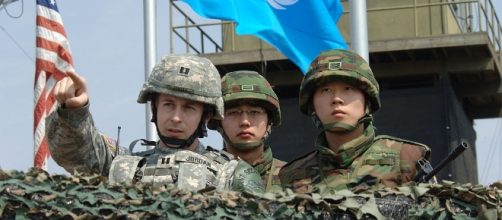South Korea plans on working with U.S. President Trump to find solutions over the cost of maintaining American Troops in the country. The talks came after Trump wanted South Korea to share more of the expenses and not just be a static recipient of U.S. aid.
What is the solution proposed by South Korea?
Korean Defense Ministry spokesperson, Moon Sang-gyun said that Seoul is willing to enable negotiations to achieve a reasonable standard of sharing costs. He added that they are working with the U.S. to ensure that both governments will work out a fair, burden sharing agreement for the continued presence of American troops in the peninsula.
At the moment, South Korea is already paying almost half of the deployment cost of U.S. troops. According to Trump, with the addition of the THAAD (Terminal High Altitude Air Defense) system, the cost already shouldered by Seoul is now no longer enough.
As North Korea continues its nuclear and ballistic ambition, South Korea doesn't have any choice but to accept U.S. military aid in the country. However, South Koreans are slowly opposing the presence of U.S. troops, especially with the rising sentiment of reunification with North Korea.
How will the United States continue its presence in South Korea?
Trump had said in various interviews that he wanted Seoul to shoulder more of the cost of U.S. men and material in the country.
This is after more and more equipment and manpower are deployed in the said country. The issue was relatively magnified after the deployment of the Thaad which according to Trump costs $1 billion to operate. At the moment, the THAAD system is functional in the country and is defending the entire peninsula from the threat of missile attacks from the North. Trump also said that his meeting with South Korean President Moon Jae-in that they are working to ensure the fair burden sharing to U.S. troops.
However, one of the major problems that is looming over the horizon is the growing threat from China. As of the moment, China is busily extending its military reach over the entire Asian continent.
This is predominantly felt in the South China Sea, where Chinese fortification of the area within the "nine-dash" line is gaining pace. The United States will have to enter a compromise with South Korea for the continual presence of American troops in the peninsula. So in the end, South Korea can just sit back and see the U.S. slowly simmer down to deals that will not force Seoul to pay more for American troops.


